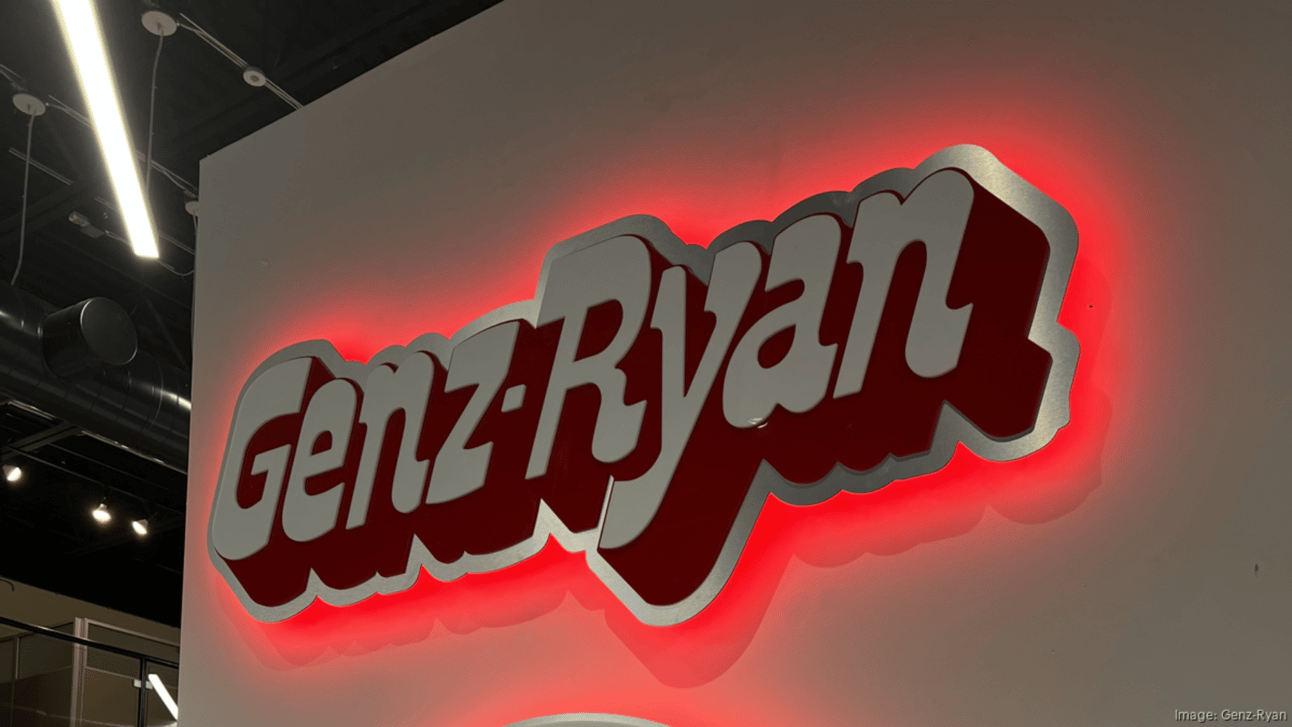An inside look at Genz-Ryan’s tech stack
Seven core pieces of software keep the company running, says CEO Jon Ryan

Image: The Business Journals; Logo: Property of Genz-Ryan
Travel about 20 minutes south of Minneapolis and you’ll find Genz-Ryan, an HVAC, plumbing, and electrical company serving the Twin Cities for almost 75 years.
-
At the helm of the operation, which counts over 100 employees, is Jon Ryan, a tech-savvy Midwesterner, who shared with us the technology powering his company in a 50-minute conversation.
The big picture: Seven core pieces of software keep Genz-Ryan running: ServiceTitan (including Phones Pro), Avoca, Faraday, measureQuick, Rilla, Buck.ai, and Hatch.
What’s happening: Ryan gave us some color on each one:
-
Phones Pro: “It’s been great for outbounding. If you’ve been around for 5 to 10 years, you need to be mining your existing customer base. They say about 8% of your base will need a replacement in a given year, assuming a 12 to 15-year lifespan.”
-
Avoca: “We plug in our own rubrics and scripts and the AI analyzes calls. It’s useful because you can go back and see exactly where [CSRs] aren’t following the process. We’re also using it for after-hours and overflow.”
-
Faraday: “We all have problems with technicians not entering serial and model numbers or entering the wrong numbers of installed equipment, so we’re able to take pictures of anything with a serial number, and it puts that information into our equipment list in ServiceTitan. It also searches the manufacturer and federal database for recalls.”
-
measureQuick: “Basically, it takes all the gauges that we’re supposed to be using on every service call, grades the system A through F, and puts it into a plain English report that you can give to homeowners.”
-
Rilla: “We’re effectively able to do ridealongs with technicians every day, and coach them in real-time.”
-
Buck.ai: “It pulls your calls, recommends a schedule to publish, and then pushes it into ServiceTitan. And it’ll reconfigure your dispatch board on whatever interval you set — we do it every hour. There was some light functionality we liked better about Buck than ServiceTitan’s Dispatch Pro.”
-
Hatch: “Hands down, every company should explore something like Hatch or Chiirp for re-hashing, speed to lead, and nurturing. It aggregates all of our Facebook and Instagram messages, and Contact Us forms, and we can automate responses.”
Of note: The company takes a slightly different approach to measureQuick than most.
-
“In the A through F rating, [a customer’s system] needs to have at least an 85% score before we bring them on as a service plan member,” Ryan explains.
-
Why? “Everyone has those system installs you’re going back on, but it gives credibility to what you’re doing,” he says.
-
“You’re handing the homeowner a report that says ‘Your system is installed correctly.’ If they have problems, we can say, ‘Your system had a 99% score when it was installed, and we can score it again to ensure proper operation and system health.’”
Zoom out: While Genz-Ryan utilizes a plethora of software, Ryan quickly pointed out that it’s not just for sh*ts and giggles.
-
“You can go broke spending all of your money on technology enhancements, so you have to be very clear upfront about what you’re expecting from it,” he says.
-
“Am I installing this because it’s cool? Or can I pinpoint a specific ROI or cost savings?”
On contracts: Ryan suggests that contractors should negotiate not just price, but contract terms with every new technology vendor.
-
“I think it would behoove you to get an opt-out. Before you get locked into a 12-month agreement, you should ensure that you have adequate time to test it,” he says.
-
“And don’t go for 30 days, [because] you’re gonna need at least 60 to 90 days to evaluate it,” he adds.
-
“Every sales rep will tell you that their product will butter your bread and fold your laundry, but it won’t.”
On implementation: “Every implementation needs a champion — someone who owns it. They may not do all the work, but they own the process,” Ryan notes.
-
“I’d also check references,” he says. “Get three or four references, and if everyone can’t tell you a decent amount of pain points, then don’t do it, because they’re not telling you everything.”
-
Yes, but: “If you’ve got one or two people, you probably don’t need all of this automation. However, I’d say you do need a re-hash solution like Hatch,” he adds.
On execution: There’s a difference, Ryan notes, between knowing which technology is available, and actually using it.
-
“If it’s been a year [since you brought in Rilla] and nothing’s improved, well, what did you do?” he asks. “‘We didn’t have time to analyze everything.’ Okay, your fault.”
-
“‘My top tech refused to report everything so no one else took it seriously and we didn’t take action.’ Okay, again, your fault.”
The bottom line: “These systems rely on you putting in data — and garbage in equals garbage out. They’re only as good as the execution and the people behind the execution.”
Editor’s note: This is not a paid endorsement for any of the products named.
Links: ServiceTitan, Avoca, Faraday, measureQuick, Rilla, Buck.ai, Hatch
📬 Get our stories in your inbox
Keep reading
ServiceTitan report reveals contractor insights
December 4, 2023
Google launches AI-powered Q&A on contractors’ Business Profiles
The company has started rolling out a new feature that lets consumers ask specific questions about contractors when viewing Business Profiles
Rheem parent moves forward with Fujitsu HVAC acquisition
The company has completed its tender offer for Fujitsu's HVAC subsidiary, nearly five months after announcing the deal


